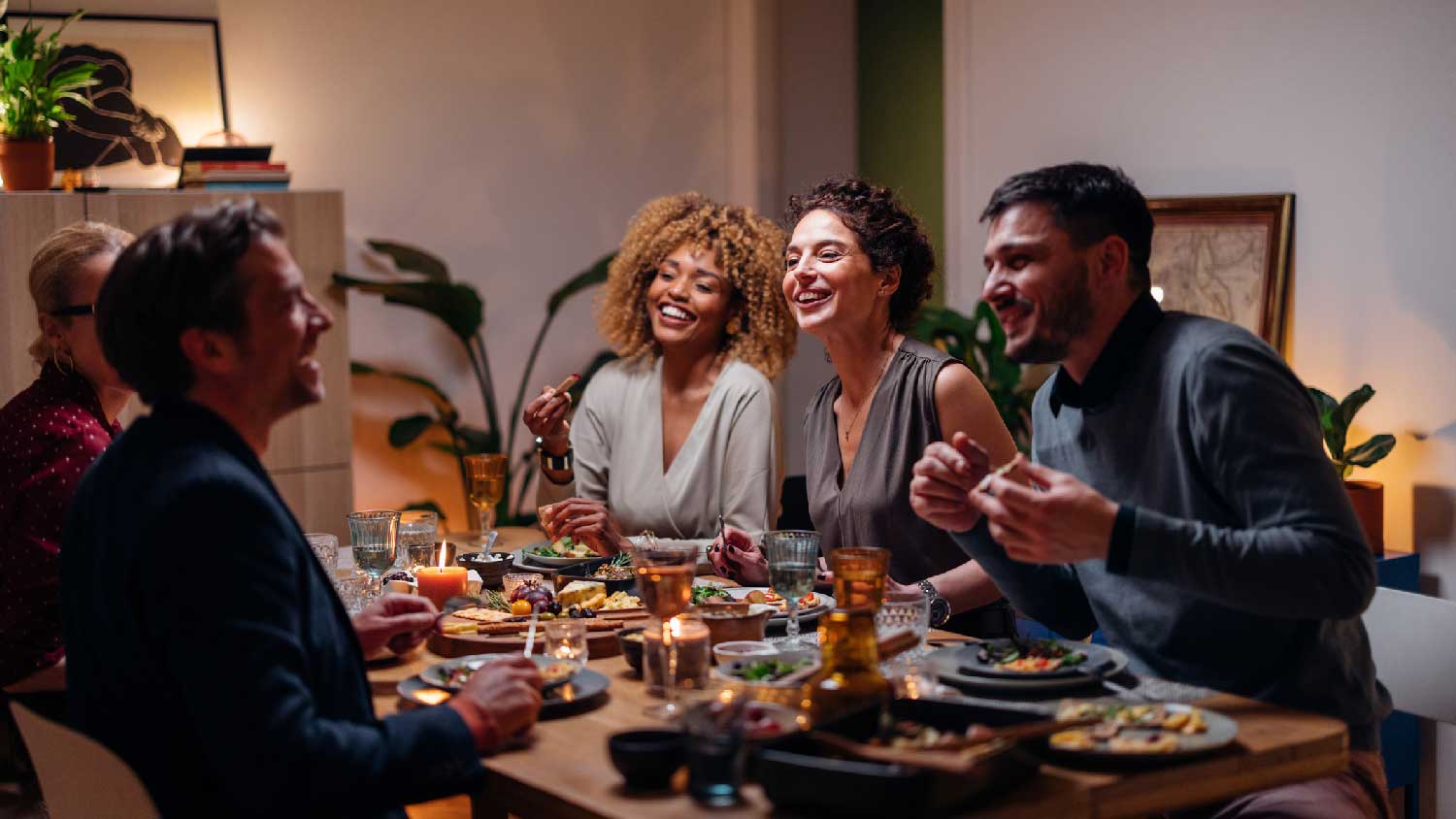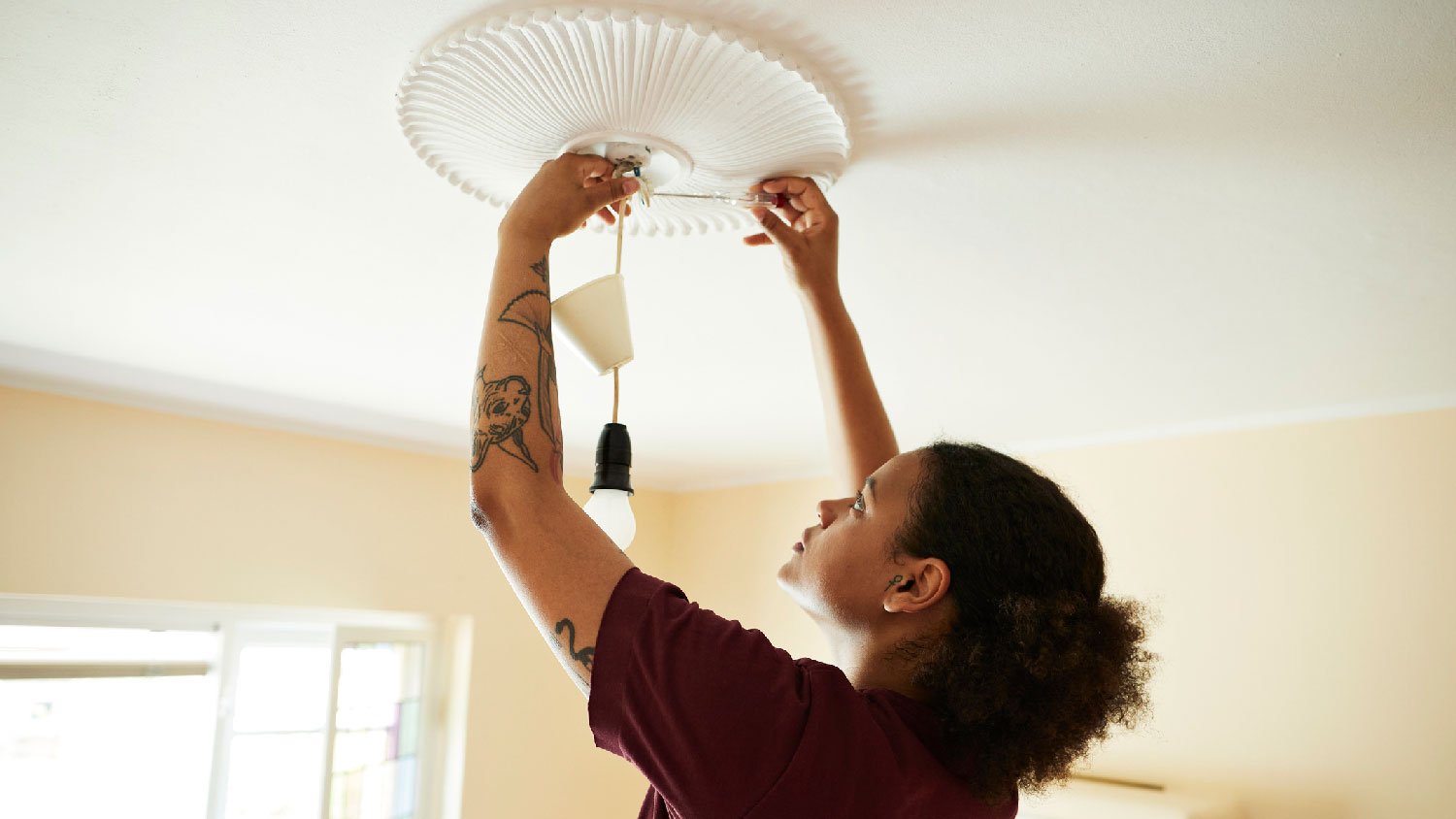
Discover how much under-cabinet lighting costs. Discover installation prices, key cost factors, and expert tips to save on your kitchen or workspace lighting project.
You don’t always want the brightest bulb in the box


There are three main residential lighting types: ambient, task, and accent lighting.
Ambient lighting is the main light source in a room.
A small room may only require one ambient light in the center.
Consider factors like temperature and location when choosing ambient lighting.
Customize ambient lighting for different rooms in your home.
Although lighting is often an afterthought when designing a space, the right lighting can elevate the aesthetic, mood, and tone of your home. With thoughtfully arranged ambient lighting, you and your guests can enjoy both the aesthetic and practical benefits. Use this guide to learn what ambient lighting is and how to optimize it for your home’s needs and style.
There are three basic lighting types used to create a welcoming home environment: ambient lighting, task lighting, and accent lighting. Combine them to create different ambiance for various spaces.
Ambient lighting, also called general lighting, is the primary light source in a room. In contrast with directional lighting, such as spotlights or downlights, ambient lighting is indirect and even lighting throughout a space that lays the foundation on which to layer other light sources. Ambient lighting is often found with overhead light fixtures such as chandeliers and recessed lighting, but there are various ways to create ambient lighting.
Overly bright lighting can upset a room’s ambiance (you know the kind). But when you implement ambient lighting, you create an environment with a softer and more inviting effect than standard overhead lighting.
Ambient lighting is great for taking the edge off of an otherwise bright room and helping you wind down. If your vision board includes a calming living room or a cozy kitchen, ambient lighting can help you make the most of your space.

There are several advantages to choosing ambient lighting, including:
Creates a calming environment
Illuminates walkways in your home
Highlights focal points
Reduces glares
Produces more natural lighting
Adds moodiness to a room
Emphasizes architectural elements
Uses light and shadows to add dimension
Ambient lighting plays a major role in how your home looks and feels. Consider the following to create the best ambient light for your space.
Before committing to certain light fixtures, consider the room’s main purpose and the type of lighting it’s best suited to. For example, you might want bright light to encourage productivity in a home office, while softer lighting might work better for your bedroom, living room, or places where you’re meant to relax.
Lumens are a measurement of the brightness of a light source. The more lumens your light source has, the brighter it will be. For indoor residential lighting, recommended lumens typically range from 500 to 10,000, depending on the size of the room and the brightness you want.

You can strategically place ambient lights to provide optimal and even lighting for a given area. Ideally, light fixtures illuminate the space evenly rather than crowding one side of the room or another.
If you're lighting a small room, a single type of ceiling light fixture in the center of the room is often enough to provide adequate ambient lighting. Larger rooms may require multiple ceiling light fixtures to create a balanced and well-lit space. If you have high ceilings or require assistance with electrical work, call in a local light fixture contractor.
Color temperature significantly affects the ambiance of your room. Lighting temperatures range from cool to warm—the former has a subtle blue tint, while the latter has a yellow tint.
Cool light sources tend to energize a room, so they're great for home office spaces, workshops, and playrooms. Warm light sources create more relaxing, cozy environments ideal for spaces where you unwind.
Kevins are the unit of measurement for lighting temperature and typically range from 2,000 to 6,000 Kelvins. The higher the number, the cooler the temperature, and ambient lighting temperatures usually fall between 2,000 and 3,500 Kelvins.
Different moments throughout the day often call for different lighting. For instance, when you're studying in your den or living room, you probably want brighter light than when you're relaxing after a long day. That's where task and accent lighting come in handy.
Layering task and accent lighting on top of ambient lighting allows you to adjust the lighting depending on your needs. When you want to feel energized, you can turn all the lights on. When you want to relax, maybe you only turn on a task light. Adding dimmers to your lights can also help you adjust the lighting as needed.

There’s no shortage of lighting strategies. From moody wall sconces to extravagant chandeliers, here are some of the most popular ambient lighting sources:
Don’t underestimate the power of a floor lamp in the corner of your room. With the proper placement and the right lamp shade, you can customize the amount of lighting and cater it to your specific needs. For a lighter ambiance, opt for a clear lampshade. For a dimmer ambiance, consider a thicker cloth shade.
Modern meets traditional with wall sconces. Place sconces in a hallway to create a welcoming mood and even lighting between rooms. If you opt for sconces that cast specific down or up light, opt for dimmer lights and evenly spaced fixtures for a diffused lighting effect.
Pendant lights cast even but gentle light and provide the right ambiance for dining, making them the perfect type of light for kitchen spaces and dining rooms. Since pendant lights hang from the ceiling, you can place them anywhere without encroaching on your space. Add as many lights as you like in just the right places to create ambient lighting, such as over a kitchen island.
Most types of chandeliers provide the same type of diffused light as a pendant light, but they typically have a broader range. For large rooms or those with tall ceilings, chandelier lighting is the perfect element for adding depth and luxury to your space without compromising on ambiance.

Task and accent lighting complement the ambient lighting in a space. A well-lit home often incorporates each lighting type to create a dynamic ambiance that you can adjust depending on the effect you're after.
Task lighting is commonly known as the second layer of home lighting. Aptly named, task lighting optimizes the light for various tasks, such as reading or cooking. Kitchen task lighting, for example, makes it easier to see during food prep, while a lamp at your desk can help you better see what you’re working on. Common task lighting fixtures include table lamps, vanity lights, and adjustable floor lamps.
Accent lighting is the third layer of home lighting. It solidifies the overall mood of the space and showcases certain architectural features or home decor. Common accent light fixtures include wall sconces, cabinetry lighting, and good old-fashioned candlelight. Accent lights surrounding a bathroom mirror, for instance, enhance mood and highlight decorative pieces.
Your kitchen, living room, dining areas, and other spaces in your home serve as gathering places for friends and family. When layered with complementary lighting, ambient lighting can provide warmth and brighten the space to create a welcoming effect.
Updater: Alannah Koene
From average costs to expert advice, get all the answers you need to get your job done.

Discover how much under-cabinet lighting costs. Discover installation prices, key cost factors, and expert tips to save on your kitchen or workspace lighting project.

Light fixtures are important elements in any home. Find out how much it costs to install a light fixture based on factors like type, location, and labor.

Get transparent light fixture repair cost info. Learn what impacts price, compare repair vs. replacement, and find ways to save.

If you’re planning to install recessed lighting, one of the first things you’ll do is figure out how many recessed lights you need. Here’s how to do that.

Lighting aisle feeling overwhelming? This article explains the different types of light bulbs, watts, lumens, shapes, sizes, colors, and more.

LED wafer lights vs. can lights—which one is the right choice for lighting your home? Learn more in this quick comparison guide.